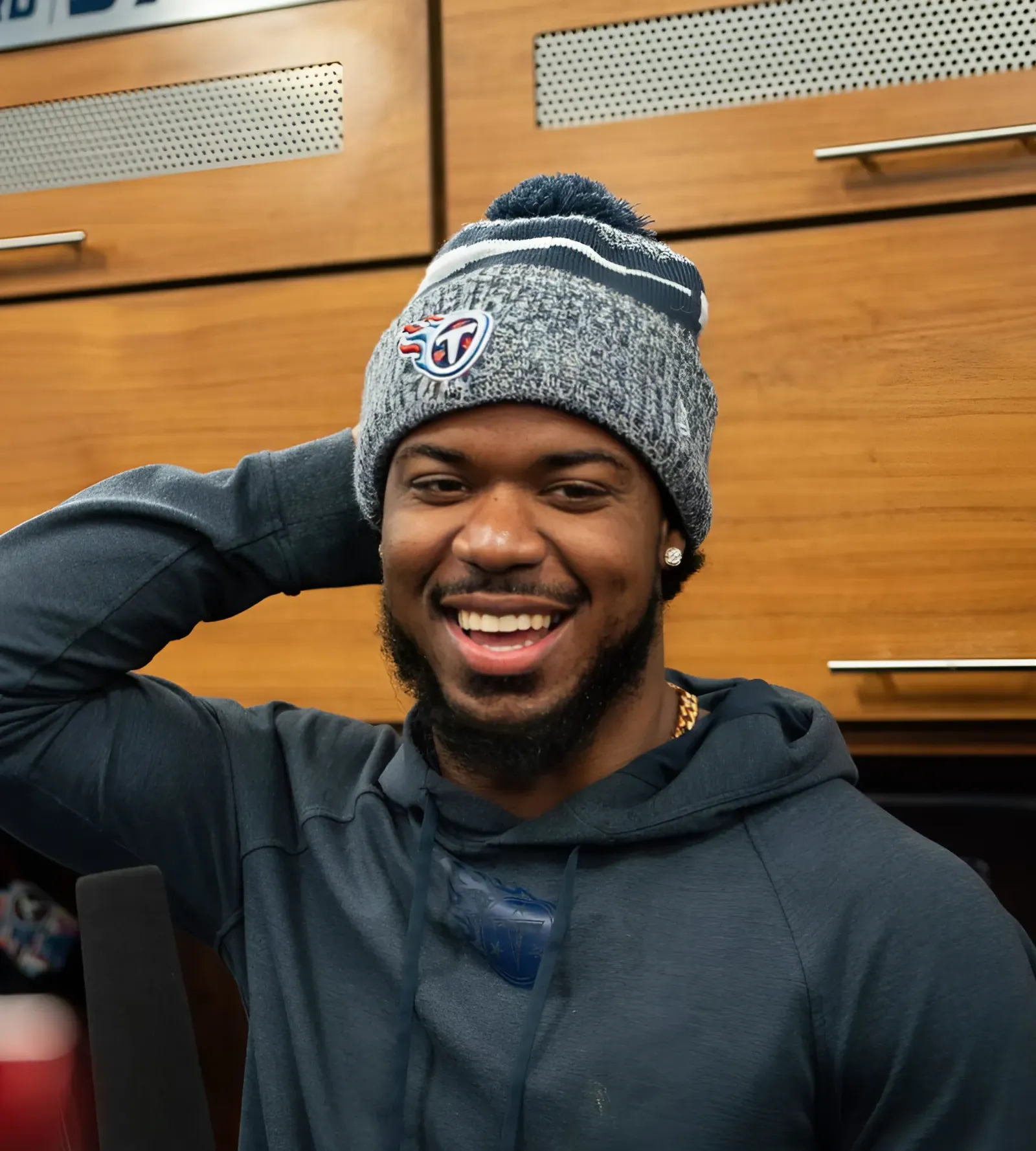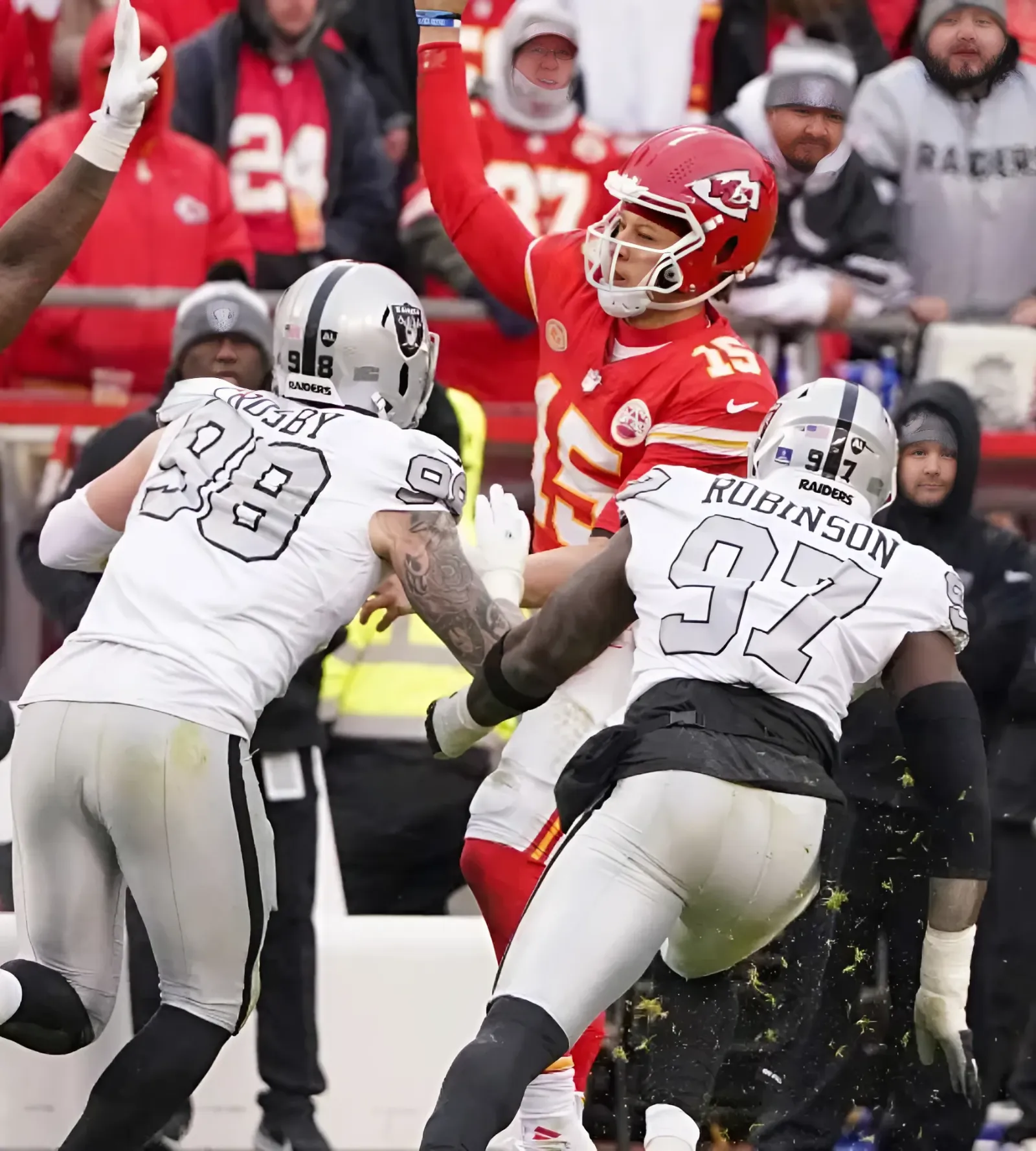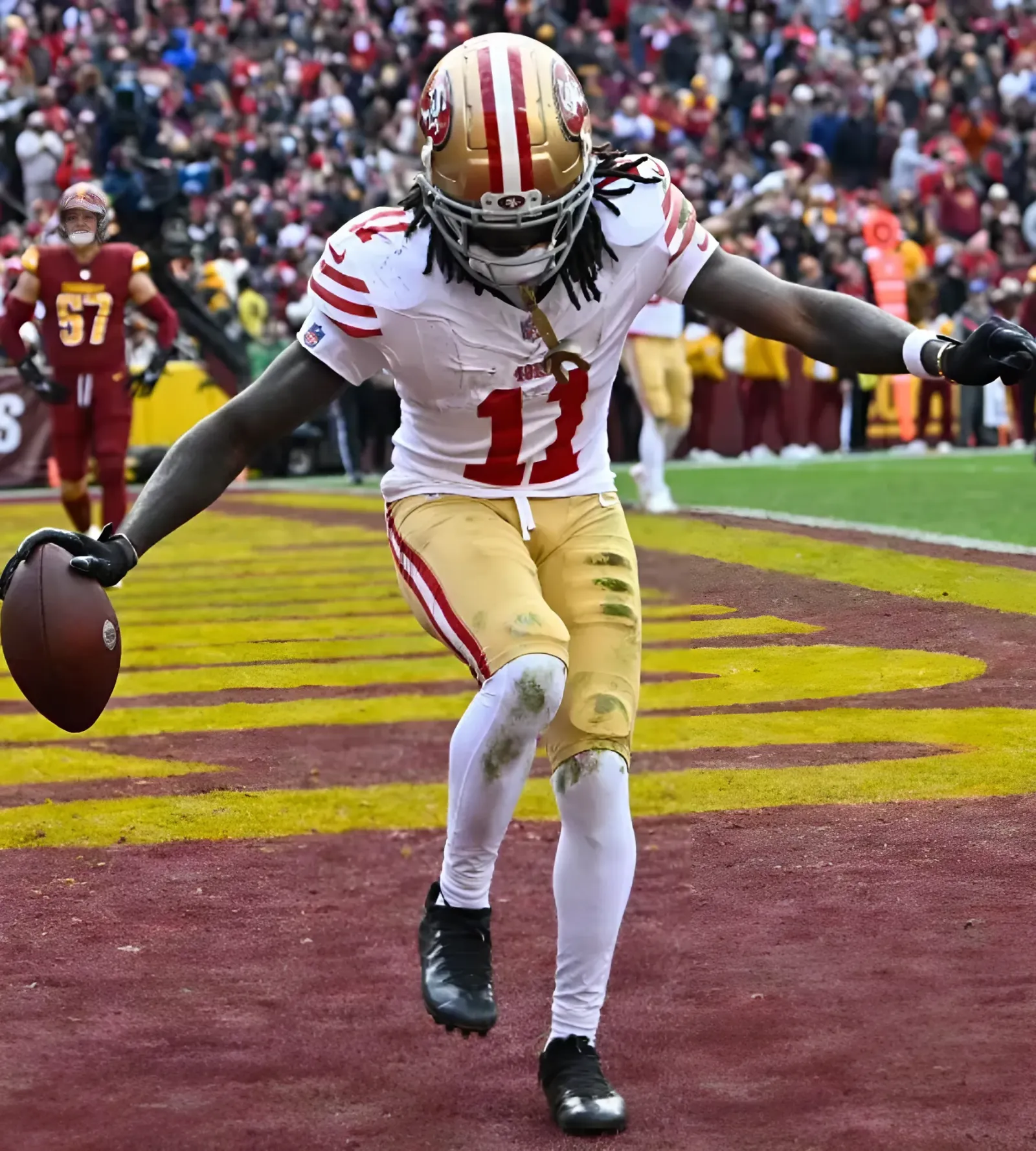Of the several players signed by GM Patrik Allvin and Co. on Day One of the 2024 Free Agent Frenzy, only one received any real questions about their value, and that player was Vincent Desharnais.

Big questions for a big player.
The Canucks signed Desharnais for two years at a $2 million AAV.
There are those who ask why such a hefty salary might be handed out to a player who, on the surface, brings little beside their own heft to the table.
But there may be more than meets the eye when it comes to Desharnais.
Hindsight-Free Analysis
In this series of instant reactions, we’re attempting to offer transparency wherever possible by copying over whatever we wrote about these players before the Canucks signed them. We wrote about Desharnais in an article with the now outdated title of “11 potential UFA replacements at RHD if the Canucks decide to move on from Filip Hronek,” and here’s what we said:
Vincent Desharnais, Edmonton Oilers
RHD, 28, 6’7”, 226lb
| 2023/24 Cap Hit | Games | Goals | Assists | Points | Avg. TOI | xGF% |
| $763K | 78 | 1 | 10 | 11 | 15:43 | 53.91% |
We’re in the dregs now. Desharnais is, and probably always will be, a bottom-pairing defender. We put him on the list because A) he’s big, B), he’s had fine success pairing with some of the Oilers’ more skilled LHDs, and C) he’s currently playing decent minutes for the Oilers on route to the Stanley Cup Finals.
But he’s not at all top-four material.
Now, that might not sound super positive. But remember that we were attempting to pitch Desharnais as a potential Filip Hronek replacement in that article…and that, he ain’t.
But as a depth defender, correctly placed in the depth chart, Desharnais certainly has more to offer.
More to offer, again, than just his most obvious physical attributes.
But that’s where we’re starting all the same.
Size and a Right-Handed Shot: Check
It’s no secret that size is the main attraction when it comes to Desharnais. He’s 6’7” and 226 pounds, making him one of the biggest players in the NHL – and he acts like it.
Sizeable defenders are in in the NHL, especially when it comes to the postseason. For evidence, just look at the average size of the bluelines for Stanely Cup Finalists Florida and Edmonton, the latter of which Desharnais featured on (though he only dressed for one game in the Finals.)
There are simply only so many defenders in hockey with a wingspan that covers as much ice as Desharnais. On frame alone, he’s a rare commodity.
Speaking of which, it bears mentioning here that Desharnais is a right-handed defender, otherwise known as the rarest form of hockey player. Seriously, don’t overrate this one, singular biographic detail. Those wondering why Desharnais got an extra year of term and $500K more in salary over Derek Forbort can find the bulk of the answer in the two players’ contrasting handedness. At the end of the day, it’s a question of supply and demand.
Put those two traits together and you’ve got a fairly unique specimen, something that takes a lot of the risk out of a signing that, for many, came with an unexpectedly-high salary. Desharnais’ attributes all but ensure that someone will be willing to give him a shot at any point over the next two seasons, barring disaster.
But the Canucks aren’t planning to dump Desharnais. They’re planning to use him, and he’s another part of a general scheme that seems to be aimed at piling up as many giant defenders behind Quinn Hughes and Filip Hronek as possible.
In an era in which size has become playoff king, there are 34 NHL defenders who stand at a height of 6’5” or greater. The Canucks now have three of them (and 6’4” Forbort, too boot).
A Somewhat Surprising Ability to Handle Quality Minutes and Partners: Check
We’ve made it clear that Desharnais is tall. But so is Karlie Kloss, and we don’t think she’d add much to the Canucks’ blueline.
In order to convince Allvin and Co. he was worth $2 million a season, Desharnais must have something else to his game. And it may be as simple as a surprising ability to handle the kind of minutes and partners beyond what his general skillset might suggest.
In what was his second season and first full season in the NHL, Desharnais held down 15:43 a night for the Oilers across 78 games.
But that average hides some stints in which Desharnais was pulling down some truly regular minutes, alongside partners such as Darnell Nurse, with whom Desharnais spent roughly 17% of the season.
Desharnais’ responsibilities increased for the 16 playoff games in which he dressed, up to 17:14 a night and a May 23rd high of 23:04 against the Dallas Stars in Round Three.
He wound up averaging the fifth-most minutes of any Oilers defender in the playoffs, playing more minutes per night than either of Brett Kulak or Philip Broberg, the two D who would largely replace him in the lineup by Round Four.
None of which is to suggest that Desharnais is going to play any sort of top-four role in Vancouver. But at that salary, he’s going to be expected to be in the lineup most nights at RHD, and that means that Tyler Myers is a top-four RHD by default, probably joined by Carson Soucy. And if that’s the case, the Canucks can’t afford a bottom-pairing playing a limited role in limited minutes.
In Vancouver, Desharnais is going to have to play closer to the 17:14 he played in the playoffs than the 15:43 he played in the regular season last year. There’s no guarantee he can handle that in the long run, but there are at least some positive signs.
Physicality: Check
With both Ian Cole and Nikita Zadorov departing via free agency, the Canucks were in need of at least a little replacement ‘old school’ on the back-end. Desharnais is decidedly old school.
He threw 135 hits last year, fourth on the Oilers, and his 6.60-per-60 ranked first among their defenders (aside from 8.03 hits-per-60 across seven post-deadline games from the one-and-only Troy Stecher.)
That’s not too far behind Zadorov’s own 8.07 hits-per-60. And while Desharnais may not share Zadorov’s penchant for open-ice blowups, his hits are – by their very nature – heavy, and are most often delivered along the boards where it hurts.
Desharnais upped his hits-per-60 to 8.69 for the playoffs.
His hits draw attention, and they often provoke retaliation. Desharnais is learning how to apply physicality more and more effectively all the time, and he’s already got a good head-start.
Toughness and Intimidation: Check
Physicality is not quite the same as toughness or an intimidation factor, and Desharnais deserves special mention on those fronts.
He’s one of the few remaining players in the NHL who could truly be called a ‘heavyweight.’
Over the past two seasons, Desharnais has dropped the mitts with the likes of Arber Xhekaj, Jonah Gadjovich, Josh Manson, and, yes, Dakota Joshua. And he’s held his own in the majority of those bouts.
For whatever positive impact an enforcer type can still have on the modern game of hockey, Desharnais is one of the last players left who can claim to provide it.
The Canucks have physical elements all over their lineup now. It’s not the worst thing in the world to have someone on the ice most nights who can back it all up.
General Defensive Qualities: Check
Desharnais being able to play a bunch of violence-filled minutes isn’t worth all that much if he can’t defend.
With a grand total of six professional goals scored across five seasons in the ECHL, AHL, and NHL, Desharnais is never going to be a notable offensive contributor. So, he had better be able to at least hold his own in his own end, or else he’ll amount to little more than a waste of much-needed cap space.
Fortunately, there are some encouraging signs of defensive prowess lurking in Desharnais’ profile.
Desharnais has a strong advanced statline, featuring a 2023/24 Corsi of 51.91%, an xG% of 53.91%, a 51.79% control of scoring chances, and a red-hot 57.81% control of high-danger scoring chances.
And, yes, we’ve covered how Desharnais’ minutes were limited. But that doesn’t necessarily equate to a sheltered deployment. Desharnais split his starts evenly between the offensive and defensive zones. And his quality of competition only barely trailed behind the overall league average.
From HockeyViz.com
It’s also worth noting that, as evidenced by that same chart, Desharnais did not have the benefit of sharing the ice with Connor McDavid and Leon Draisaitl all that often. The imbalance in quality of competition and quality of linemates made for more difficult minutes, and Desharnais handled that just fine.
Remember, too, that despite being 28, Desharnais is on just his second NHL season. In fact, he came into this year just 11 games past still being rookie eligible (aside from his age.) Prior to breaking through with the Oilers last season, Desharnais had just one full year in the AHL under his belt, and two more split between the AHL and ECHL.
In other words, Desharnais is still a relatively raw product, and that he’s already achieved such steady results at the NHL level despite what might appear to be an issue of skill is encouraging. It suggests there may still be at least a little room for growth through his remaining prime years, which just so happens to be about the same length of time the Canucks just signed him for.
Vancouver does not need Desharnais to be a shutdown defender. They do need him, however, to take on a tougher set of minutes than perhaps the average bottom-pairing defender does.
What he’s accomplished defensively in Edmonton says he might just be up to that task. especially because…
Quality Penalty Killing: Check
…if there is one thing Desharnais does well defensively, it’s kill penalties.
Desharnais averaged 2:02 of shorthanded ice-time per game for the Oilers this past season and, as the advanced stats models would indicate, fared extremely well.
This was, it’s worth mentioning, on an Oilers PK that only performed slightly better than the Canucks’ own at 79.5%, but the isolated results say that wasn’t due to Desharnais.
The Canucks can now field two PK units featuring Desharnais and Myers on the right side, and Carson Soucy and Derek Forbort on the left. That’s a lot of very literal coverage in an area where the Canucks need it most, and it really helps justify Desharnais’ paycheque and his seemingly-guaranteed nightly spot in the lineup.



